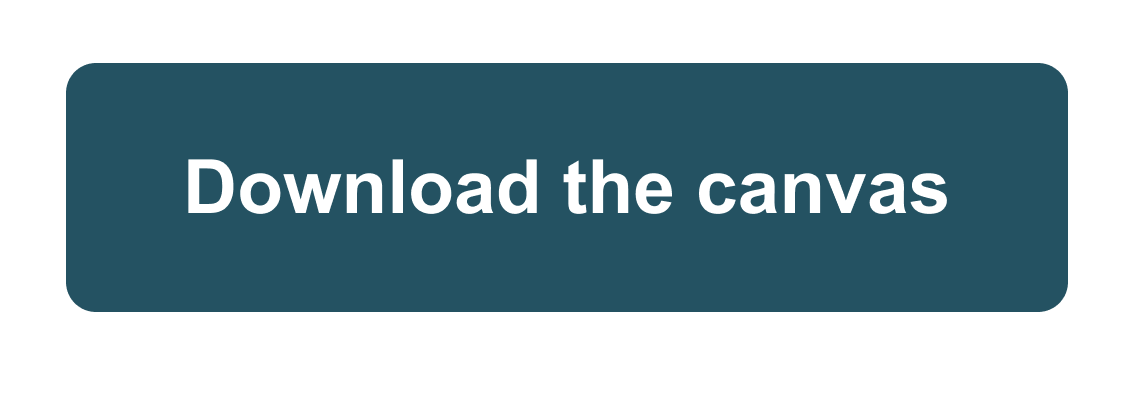Challenges
The tool addresses in a single canvas the different parts of feasibility plan. It is a great way to explore how value will/can be created, by whom, for whom and through which channels. In doing so, different issues of how to implement the solution are addressed and resolved, including: how to finance the solution, how to maintain relevancy and support, how to maintain collaboration between actors, and how to scale impact (scaling up or out).
Problem, Purpose and Needs
The tool aims to catalyse thought on the different aspects involved in implementing a solution and organizes processes in a visual way that shows linkages and flows. The visualization not only helps as planning tool but also as a communication tool to garner support and feedback.
Relevance to Climate Neutrality
Challenges
Thematic Areas
Impact Goals
Issue Complexity
Issue Polarisation
Enabling Condition
Essential Considerations for Commissioning Authorities
The tool can be useful for quickly assessing the feasibility and implementation needs/requirements of a solution before piloting and further investment.
Engagement Journey
Governance Models and Approaches
Enabling Conditions
Democratic Purpose
Spectrum of participation
Communication Channels
Actors and Stakeholder Relationships
The activity is best done in a small group composed of main representatives of the different stakeholders and value creation areas. It can also be done by project leaders and with other actors and stakeholders in consultation. In subsequent iterations, different actor groups can be informed, consulted or engaged in refining specific parts. The activity has the potential to create new relationships and connections (of mental models) between actors while working on the model.
Participant Numbers
Actors and Stakeholders
Participant Recruitment
Interaction between participants
Format
Social Innovation Development Stage
Scope
Time commitment
The time needed to complete the activity depends on the level of detail and thoroughness desired, as well as how many actors are involved in the task. It can take anywhere from 2 hours and upwards.
Resources and Investments
Typical duration
Resources and Investments
In-house
Step by Step
The social innovation business model canvas is made up of 15 blocks. Unlike similar business model canvases, this one has been modified to better suit social innovations, including among others, the following changes: a specific social value proposition, a separation between beneficiaries and financing supporters and boxes dedicated to surplus designation and social impact measurement. The canvas can be completed in any order; the following is merely a suggested path.
- Social Problem/Social Need and Existing Alternatives: identify and analyze the social problem at hand and benchmark existing solutions to find out what is and what is not working.
- Beneficiaries and Financing Supporters: identify, segment and understand your beneficiaries, customers and financing supporters (donors, investors and funders).
- Solution/Governance: ideate or describe the solution to the social problem/need and the governance model.
- Social/Commercial Value Proposition: formulate the social (i.e. the value created for beneficiaries) and commercial value proposition (i.e. the value created for paying customers/investors).
- Relationship and Channels: describe how you reach your target beneficiaries, customers and/or investors.
- Social Impact Measures: what indicators can be used to measure the impact of the solution.
- Key Activities/Key Resources: define what key activities and resources are needed to support the innovation.
- In-kind Supporters and Key Partners: list key partners who provide support, resources and services that foster the growth of the solution.
- Cost Structure & Revenue Streams: list what costs are created and how revenues will be generated (i.e. memberships fees, freemium/premium, product sales, etc.).
- Surplus: indicate where surplus will be invested if generated.
Evaluation
The tool should be shown to relevant actors (beneficiaries, customers, supply chain actors, employees, etc.) for feedback and iteration.
Connecting Methods
The canvas can be completed with information and insights coming from other tools, namely: stakeholder map, people and connections map, personas, system map, challenge map, etc. These tools can provide content for the model, but are not necessary for the completion of the canvas.
Flexibility and Adaptability
The canvas could be translated into the local language. More context-specific terms and questions could be used in the supportive text and questions in each box.
Existing Guidelines and Best Practice
SIMPACT Project’s SI Business Toolbox: model with explanation and accompanying tools that can support each box with tool explanation and canvas
http://www.simpact-project.eu/tools/toolbox_business_web.pdf
SIC’s SI Learning Repository: canvas and steps
https://www.silearning.eu/tools-archive/business-model/
Strategy Made Simple: video tutorial of different sections of the canvas (different model but relevant for the concerned boxes) https://strategymadesimple.ca/blog/category/Tools
Social Enterprise Institute: detailed explanation with example (different model but relevant for the concerned boxes)
https://socialenterpriseinstitute.co/wp-content/uploads/2018/12/Social-Business-Model-Canvas.pdf
References and Further Resources
SIMPACT. (2016). SI Business Toolbox. Retrieved from
http://www.simpact-project.eu/tools/toolbox_business_web.pdf
SIC. (2020). SI Learning Repository: Business Model. Retrieved from https://www.silearning.eu/tools-archive/business-model/


